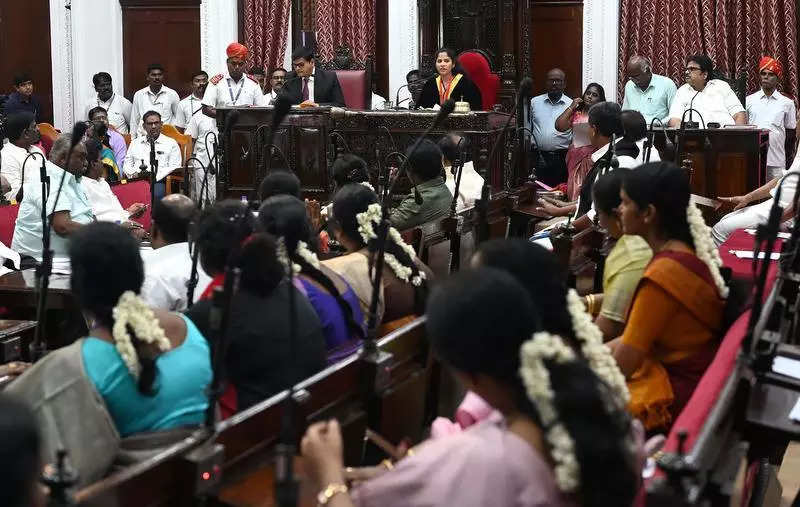India vs New Zealand: No ‘designer’ touch to India’s unparalleled dominance in their own backyard
India vs New Zealand: No ‘designer’ touch to India’s unparalleled dominance in their own backyard

It took India less than three-quarters of an hour on the fourth morning to brush New Zealand’s feeble resistance aside and storm to their biggest win by runs in Test history. That little passage of play microcosmed their domineering run in their own backyard. From 1 January 2010, India have won 41 and lost a mere five of 56 matches at home, comfortably the most intimidating record among Test teams.
Their latest conquest, by a mammoth 372 runs, came against the team ranked No. 1 in the ICC ratings. New Zealand are also the holders of the World Test Championship title and are nothing if not proud and competitive. They scrap and fight and persevere till the bitter end. They don’t lose, they must be beaten, as they reiterated in the first Test in Kanpur.

The deadlock at Green Park was a rare occurrence in India. Few teams bat out the final day to secure a draw, fewer still are away sides who find the turn and uneven bounce, the pressure of close-in fielders and of screaming spectators, of the heat and humidity too potent a concoction to overcome for long stretches. New Zealand’s ally in Kanpur, apart from their spunk and spirit, was a dead-as-a-dodo surface that refused to bake — and therefore break — under a mild wintry sun, and where it was impossible for the bowlers to challenge both edges of the bat.
The Wankhede more than made up. Despite the incessant rains in the lead-up to the Test, the curator produced an excellent cricket strip which encouraged and abetted skilled players of all vocations. There were runs to be had if you were patient enough at the start and positive in the head. The humidity naturally aided swing, and spinners thrived more on bounce than alarming turn. This wasn’t a dustbowl by any stretch of the imagination. It’s amazing that even though the match ended in the first hour of day four despite the opening session of the first day being completely washed out, there have been no murmurs of an ‘underprepared, designer track’.
Contrary to popular perception, India’s staggering numbers at home in the last 11 years have not come on crumbling dust bowls. There have been no more than a half-dozen that might fall into that category, most notably the piece of land in Pune in early 2017 against Australia which only the most imaginative might call a pitch. One of India’s worst defeats came there, journeyman left-arm spinner Steve O’Keefe picking up 12 for 70 to send Virat Kohli’s men crashing to an embarrassing 333-run hammering. That was a particularly chastening experience for India’s batsmen, whose approach to spin of no more than decent quality on slightly helpful surfaces is increasingly becoming a cause for serious concern.
For the most part, India have eked out wins on good pitches of the Wankhede vintage. That’s because they have bowling resources beyond mere spin, though unquestionably, R Ashwin has been an immense factor in the all-conquering runs of first Mahendra Singh Dhoni and now Kohli.
On Monday, the off-spinner from Chennai became the second bowler after Anil Kumble to snaffle 300 Test wickets on Indian soil. Since his debut in November 2011, he has accounted for nearly a third of all opposition wickets to have fallen in India. To be able to summon a champion of this pedigree is a luxury few captains have been able to afford, but especially in the Kohli era from the beginning of 2015, Ashwin’s versatile, arresting bowling has been superbly complemented by pacers exceptional with the new ball and old and by left-arm spinners answering to different names, none more prominent than Ravindra Jadeja.
In one of those strange quirks that add to the sport’s allure, Umesh Yadav has more wickets in India than in the more helpful climes overseas. Once referred to as the graveyard of fast bowlers, India’s changed outlook to pitches in their own patch has facilitated the emergence of Umesh as an ‘India specialist’, if you like. His slightly round-armish action which helps him procure appreciable reverse swing is a massive asset. Just to put things in perspective, Umesh isn’t always in the scheme of things when India play with four quicks overseas. It just goes to show how complete and well-rounded the Indian bowling is.
Mohammed Siraj’s triple-strike in New Zealand’s first innings in Mumbai summed up how far Indian pace bowling has come. Ashwin, Axar Patel and Jayant Yadav were expected to take a cue from Mr Perfect Ten Ajaz Patel; instead, Siraj blew the New Zealand top away with a sharp four-over burst of tremendous incisiveness. Kohli’s affinity for pace overseas is well documented, but he isn’t chary of using his battering rams in India too, not even when his spinners are on a roll.
The challenges India offers as a cricketing host are numerous and varied. Every batting crisis — and there have been multiple, let’s not forget — has allowed an unsung hero to break out of the shadows and make his case. Kohli himself has been a giant in every sense until the start of this year, but his trusted aides Cheteshwar Pujara and Ajinkya Rahane have been far less productive. If India have still managed to post competitive totals, it’s on the back of the strength in depth. Batsmen weaned on domestic cricket find the turning, spitting ball less of a landmine than those who have spent most of their time honing their skills against express pace. Further, the profusion of spinning all-rounders has ensured that the lower order has at least matched, it not eclipsed, the top in at least half the games.
Particularly since 2018-19, India have emphatically shed the ‘lambs abroad’ tag while simultaneously strengthening their grip on to the ‘tigers at home’ sobriquet. Despite multiple visits to this part of the world, the likes of Australia, England and New Zealand are still to come to grips with Ashwin and his spinning brethren. On recent evidence, they are unlikely to do so in the near future either.
INDIA AND SENA COUNTRIES AT HOME SINCE 1 JANUARY 2010
India 56 41 5 10 73.21
Australia 60 39 11 10 65.00
South Africa 53 33 14 6 62.26
England 79 45 20 14 56.96
New Zealand 46 26 7 13 56.52
(Read under: Matches, Won, Lost, Drawn, Win percentage)
Read all the Latest News, Trending News, Cricket News, Bollywood News,
India News and Entertainment News here. Follow us on Facebook, Twitter and Instagram.



 Admin
Admin 



































